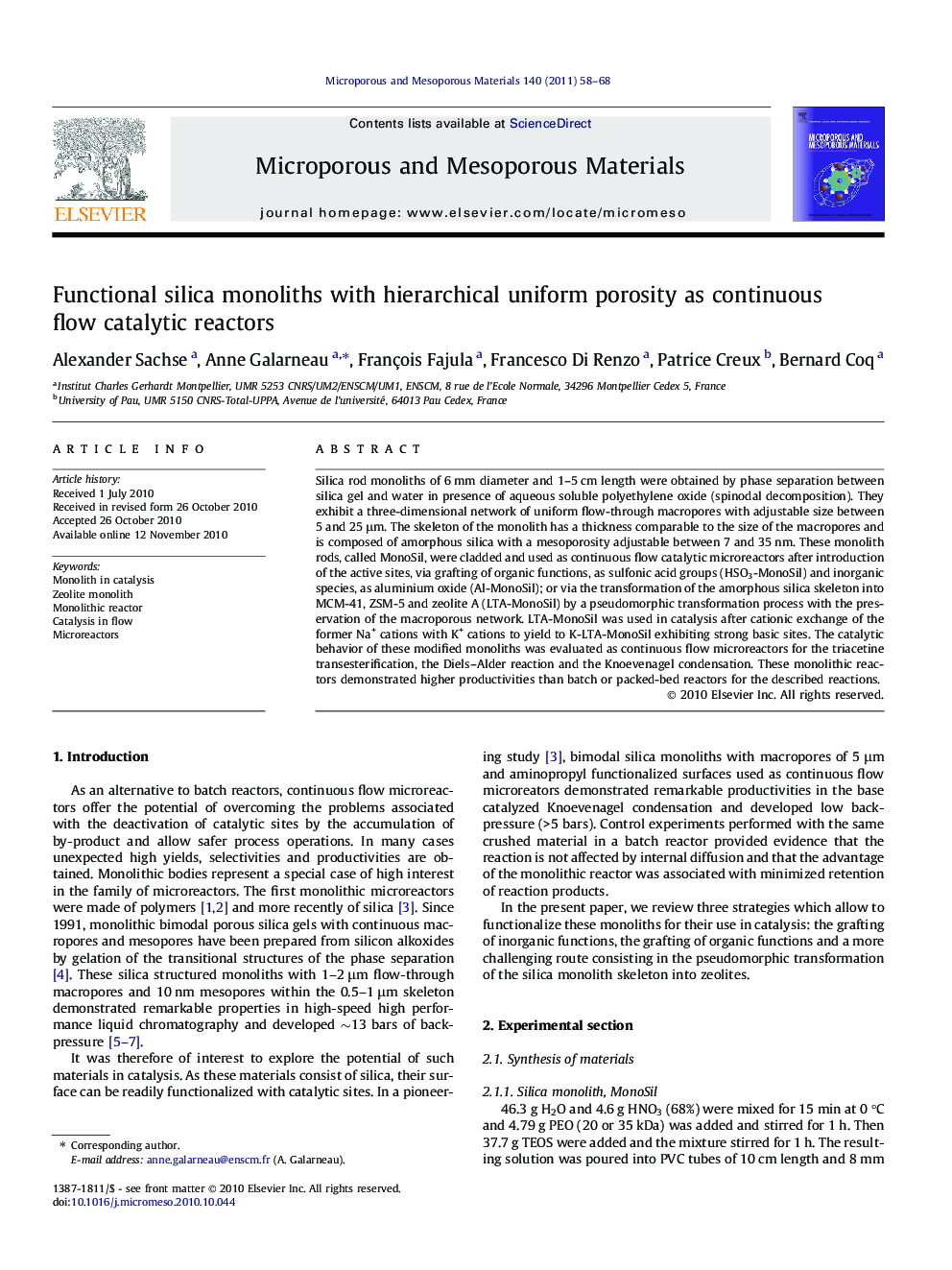| Article ID | Journal | Published Year | Pages | File Type |
|---|---|---|---|---|
| 74023 | Microporous and Mesoporous Materials | 2011 | 11 Pages |
Silica rod monoliths of 6 mm diameter and 1–5 cm length were obtained by phase separation between silica gel and water in presence of aqueous soluble polyethylene oxide (spinodal decomposition). They exhibit a three-dimensional network of uniform flow-through macropores with adjustable size between 5 and 25 μm. The skeleton of the monolith has a thickness comparable to the size of the macropores and is composed of amorphous silica with a mesoporosity adjustable between 7 and 35 nm. These monolith rods, called MonoSil, were cladded and used as continuous flow catalytic microreactors after introduction of the active sites, via grafting of organic functions, as sulfonic acid groups (HSO3-MonoSil) and inorganic species, as aluminium oxide (Al-MonoSil); or via the transformation of the amorphous silica skeleton into MCM-41, ZSM-5 and zeolite A (LTA-MonoSil) by a pseudomorphic transformation process with the preservation of the macroporous network. LTA-MonoSil was used in catalysis after cationic exchange of the former Na+ cations with K+ cations to yield to K-LTA-MonoSil exhibiting strong basic sites. The catalytic behavior of these modified monoliths was evaluated as continuous flow microreactors for the triacetine transesterification, the Diels–Alder reaction and the Knoevenagel condensation. These monolithic reactors demonstrated higher productivities than batch or packed-bed reactors for the described reactions.
Graphical abstractFigure optionsDownload full-size imageDownload as PowerPoint slideResearch highlights► Silica monolith with homogeneous and isotropic macropores and functionable mesoporous skeleton promotes the productivity of fine chemicals. ► Silica monolith allow a faster removal of by-products and/or an increase of mass-transfer. ► Zeolites-monoliths (LTA, SOD) with flow-through macropores have been synthesized by a one-step transformation of silica monoliths. ► Zeolite-monoliths have been successfully used in flow for basic catalysis.
